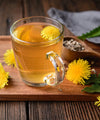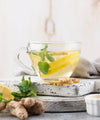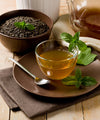Recent Post
Assam Masala Chai To Destress - Some Interesting Facts
Craig Cranston
Jan 30, 2021
The tea culture of Assam and the novel appeal of strong Assam tea is the thing that carries numerous guests to this lavish green state. To comprehend Assam tea culture better, we'll be landing on some uncommon realities about Assam tea and the recorded business that encompasses it.
Assam tea is made from the crossover of the first tea plant.
All tea is made from the Camellia Sinensis bush which began from the slopes of China. Nonetheless, the tea created in Assam is produced using a different, more confined, assortment of the shrub known as the Camellia Sinensis var. Assamica. Indeed, this assortment of evergreen bush is also used to deliver basic oil utilized in business food flavourings and scents.
CTC strategy was created in Assam during the 1930s by Sir William McKercher.
CTC is a business strategy for preparing tea which means 'pound, tear, and twist’ (or cut, tear, twist). In this technique, the tea leaves are made to experience a few tube shaped rollers. These rollers have sharp teeth that pound, tear and twist the leaves transforming them into little, hard pellets that have a solid flavour and are appropriate for tea packs. This strategy by Sir William McKercher turned into a noticeable assembling procedure by the last part of the 1950s in different pieces of the world.
Assam teas are frequently sold as 'Breakfast' teas.
Since Assam tea is developed at or close to the ocean level in the swamps of Assam, the body of the tea is energetic, malty and solid with brilliant tone. This makes the tea ideal for morning hours, with a scramble of milk to go with breakfast. Thusly, Assam tea is acclaimed for being sold as Breakfast mixes or being essential for mainstream breakfast mixes like the English breakfast tea, Irish Breakfast tea and so on
Assam tea gardens follow their own time called the Tea Garden Time.
The sun rises significantly sooner in the North Eastern conditions of India. Presently, while the Indian government hasn't endorsed a different time region for Assam, the tea manors of this locale have been observing a different time standard for more than 150 years. Known as the 'chai bagan time' or 'tea garden time', this guideline of time was set up by the British and other ranch owners.
Tea was developed in Assam, even before colonization.
Indeed, even before the Scottish explorer, Robert Bruce, found the Assam variation of the tea plant, tea was being developed and utilized in Assam. Developed by the Singpho clan of Assam, the local tribe would blend the leaves of the plant to make solid, fragrant drinks. Truth be told, it was the head of the Singpho clan, Bessa Gam, who indicated the plant to Rober Bruce back in 1823. This is an eminent reality about Assam masala chai tea, which shows that all credits throughout the entire existence of tea in India shouldn't go toward the East India Company.
← Older Post Newer Post →




